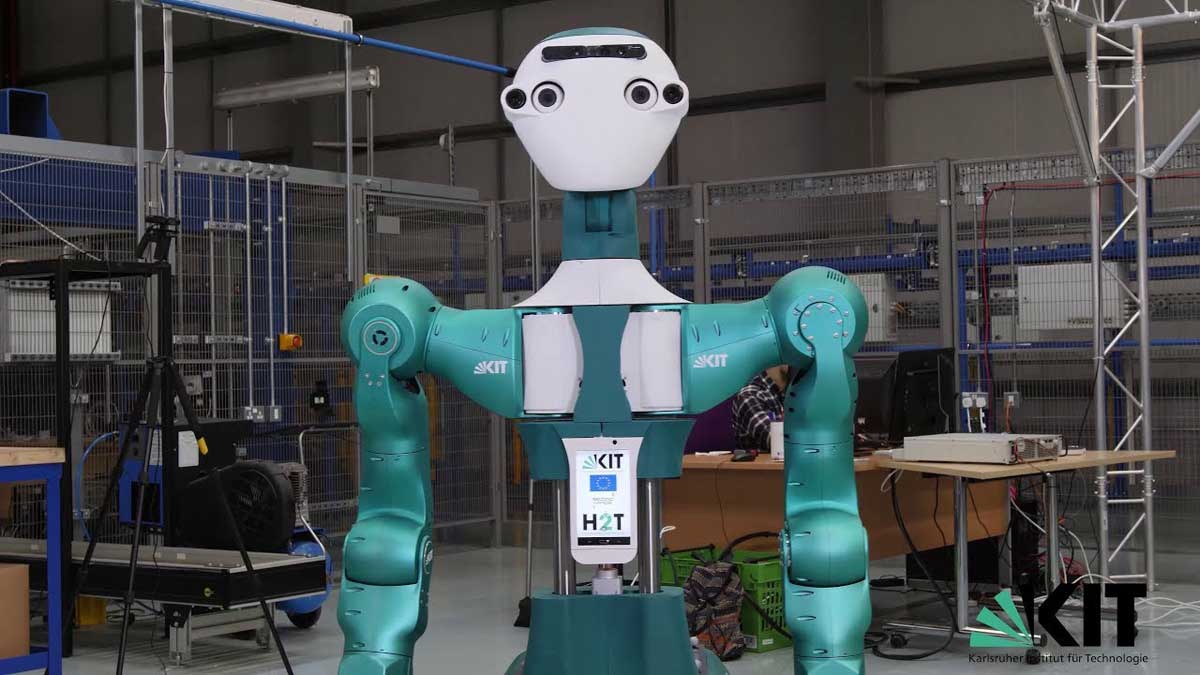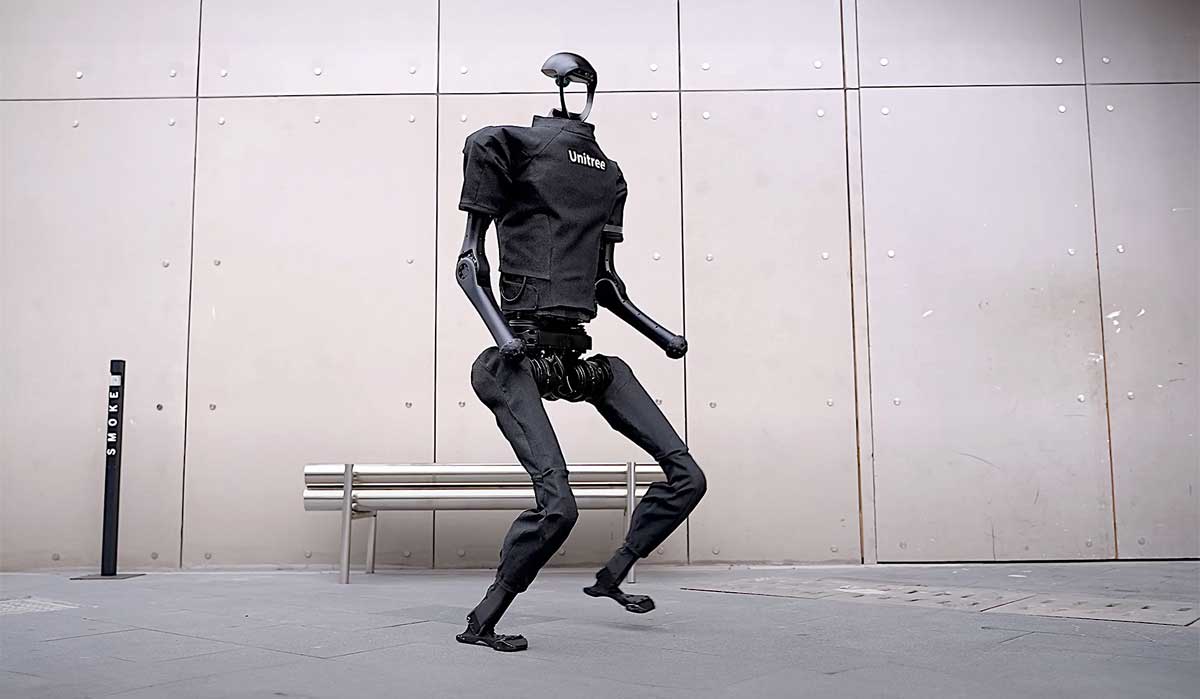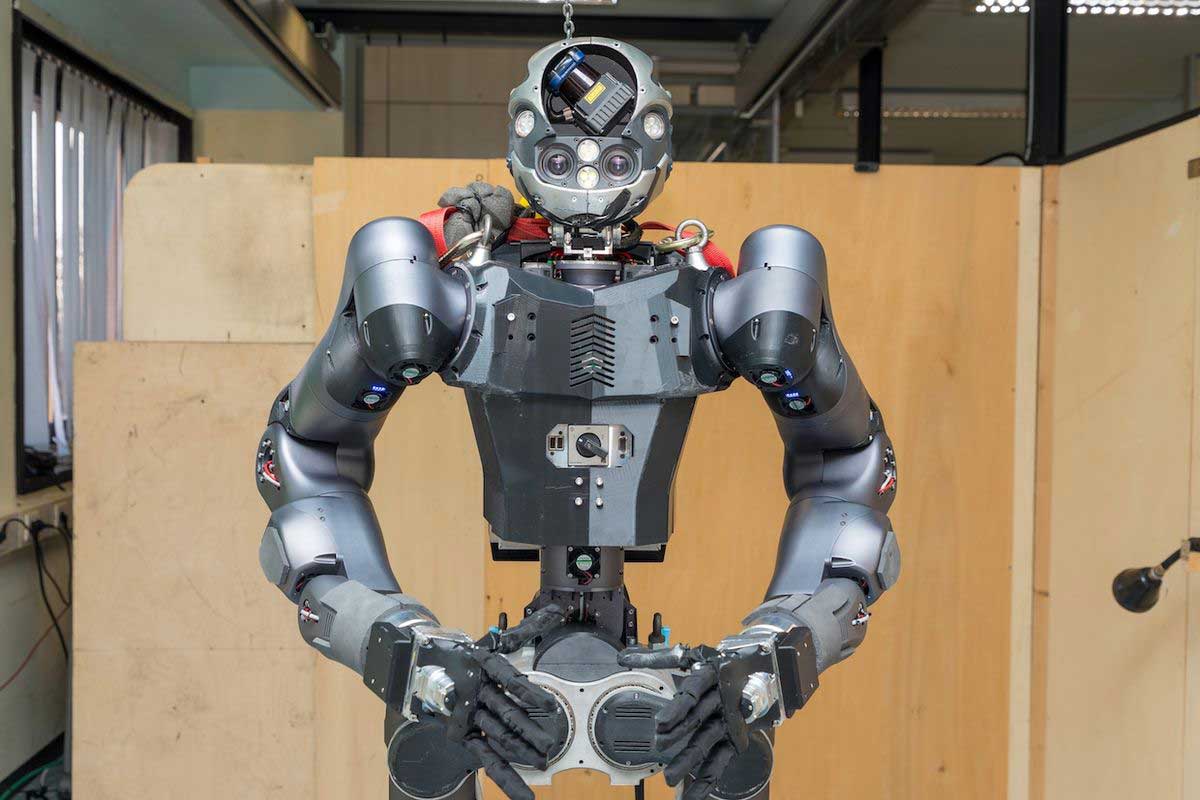Imagine a tireless, dexterous helper working alongside you in a factory, effortlessly wielding tools and anticipating your needs. This isn’t science fiction; it’s the reality envisioned by the ARMAR-6, a cutting-edge humanoid robot designed to transform industrial environments. Developed by the Karlsruhe Institute of Technology (KIT) and funded by the European Union’s Second Hands consortium, ARMAR-6 stands as a testament to the advancement of robotics and its potential to redefine human-machine collaboration.
Standing tall at over 2 meters with a telescopic torso, ARMAR-6 possesses an uncanny resemblance to a human. This deliberate design choice grants it the ability to seamlessly interact with the world around it, using tools designed for human hands and navigating spaces built for human proportions. But its true strength lies in its artificial intelligence. Equipped with advanced machine learning algorithms, ARMAR-6 can:
Perceive and understand its environment: Through an array of sensors, the robot gathers visual, spatial, and physical data, building a comprehensive understanding of its surroundings.
Reason and plan its actions: Advanced algorithms allow ARMAR-6 to interpret situations, make decisions, and plan its actions accordingly, adapting to dynamic environments and unforeseen circumstances.
Learn and improve: Unlike its statically programmed predecessors, ARMAR-6 actively learns from its experiences. By observing human actions and receiving feedback, it refines its skills and expands its capabilities over time.
This unique combination of human-like form, advanced AI, and continuous learning empowers ARMAR-6 to excel in various industrial tasks. It can:
Perform complex manipulations: From wielding power tools to delicately handling fragile objects, ARMAR-6’s dexterous hands and adaptable grip allow it to tackle a wide range of tasks with precision.
Collaborate with humans: As a true teammate, ARMAR-6 can anticipate human needs, offer assistance when needed, and adapt its behavior to complement its human partner’s actions.
Operate autonomously: For repetitive or hazardous tasks, ARMAR-6 can work independently, freeing up human workers for more strategic roles.
While still in its research and development phase, ARMAR-6’s potential is undeniable. It holds the promise of increased productivity, improved safety, and a more flexible workforce in industrial settings. As the technology matures and partnerships form with industrial stakeholders, the future of human-robot collaboration seems brighter than ever, with ARMAR-6 leading the charge.
The development of ARMAR-6 highlights the rapid evolution of robotics and its increasing impact on various industries. While ethical considerations and potential job displacement concerns need to be addressed, the collaborative and adaptable nature of robots like ARMAR-6 suggests a future where humans and machines work together, not against each other, to create a more efficient and productive world.





Leave A Comment